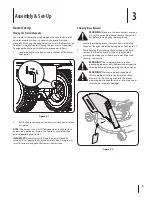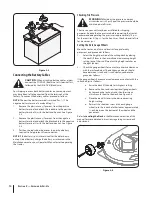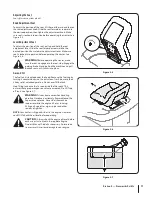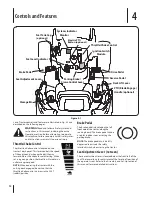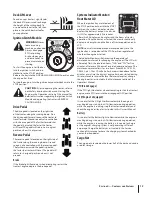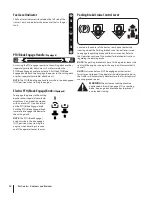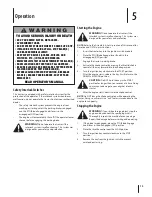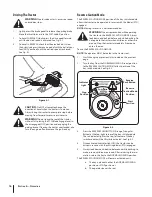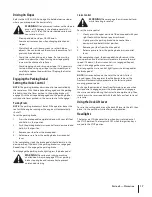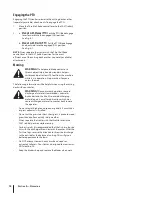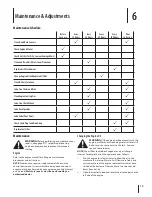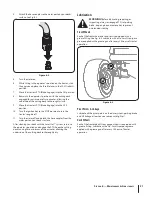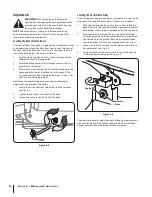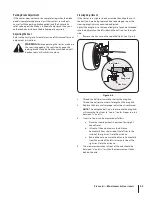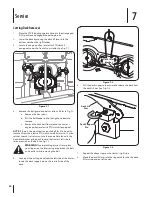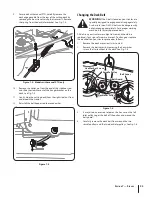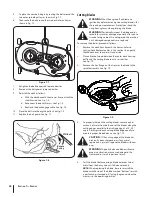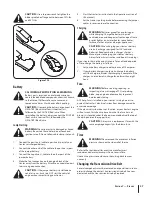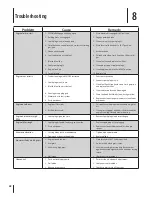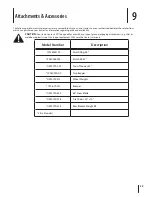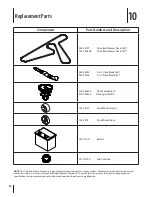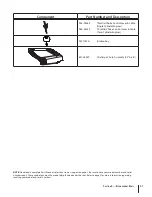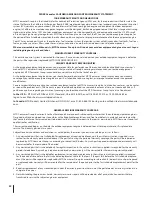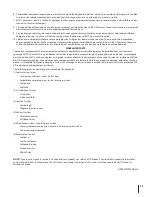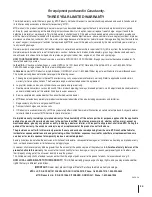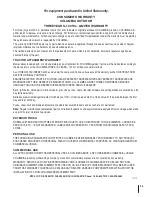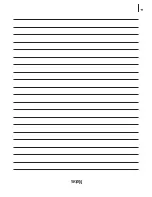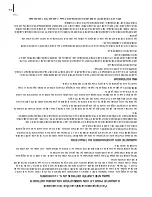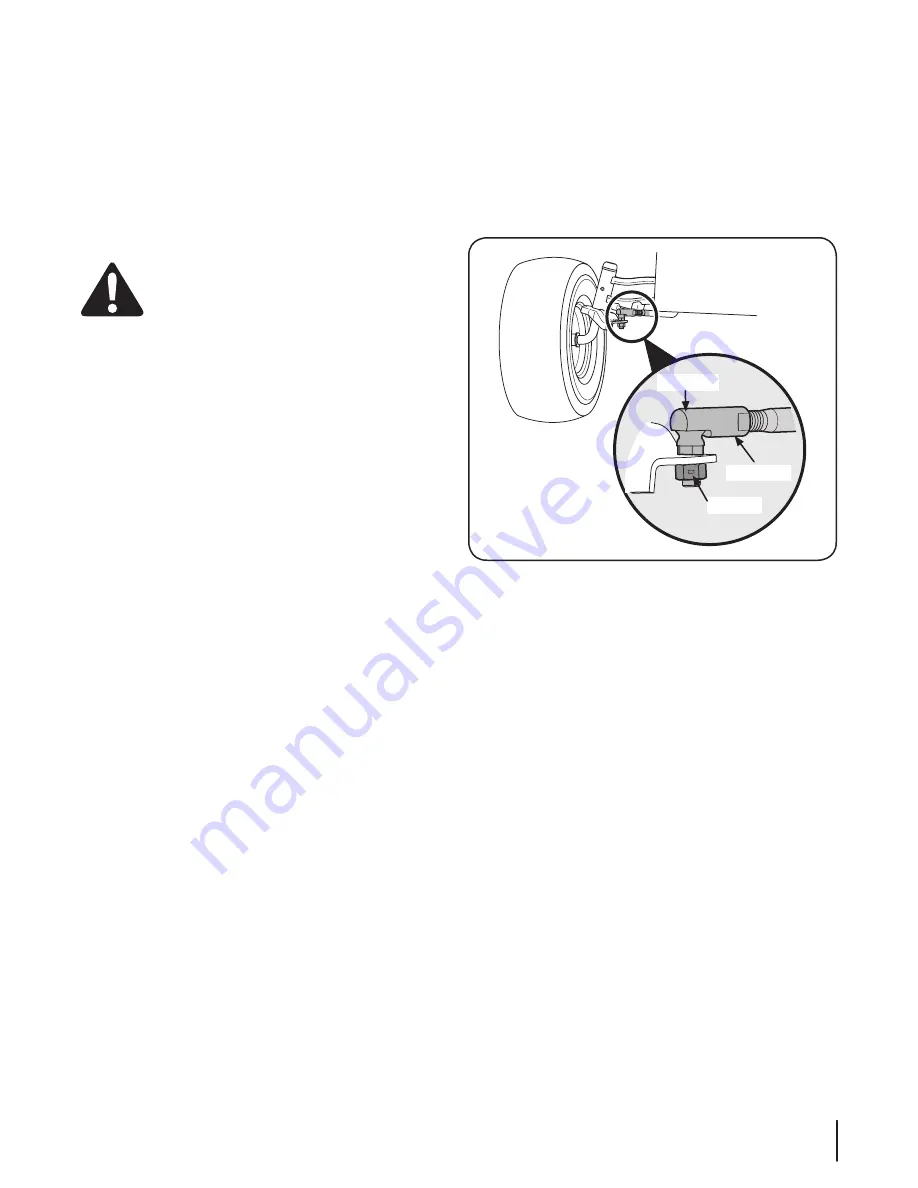
Parking Brake Adjustment
If the tractor does not come to a complete stop when the brake
pedal is completely depressed, or if the tractor’s rear wheels
can roll with the parking brake applied (and the hydrostatic
relief valve open), the brake is in need of adjustment. See your
authorized dealer to have the brake properly adjusted.
Adjusting the Seat
Refer to the Set-Up and Assembly section of this manual for seat
adjustment instructions.
WARNING!
Before operating the tractor, make sure
the seat is engaged in the seat-stop. Engage the
parking brake. Stand behind the machine and pull
back on seat until it clicks into place.
Steering Adjustment
If the tractor turns tighter in one direction than the other, or if
the ball joints are being replaced due to damage or wear, the
steering drag links may need to be adjusted.
Adjust the drag links so that equal lengths of each are threaded
into the ball joint on the left side and the ball joint on the right
side:
1.
Remove the hex nut on the top of ball joint. See Fig. 6-6.
2.
Thread the ball joint inward to shorten the drag link.
Thread the ball joint outward to lengthen the drag link.
3.
Replace the hex nut after proper adjustment is achieved.
NOTE:
Threading the ball joints too far onto the drag links
will cause the front tires to “toe-in” too far. Proper toe-in is
between 1⁄16” and 5⁄16”.
4.
Front tire toe-in can be measured as follows:
a. Place the steering wheel in position for straight
ahead travel.
b. In front of the axle, measure the distance
horizontally from the inside of the left rim to the
inside of the right rim. Note the distance.
c. Behind the axle, measure the distance horizontally
from the inside of the left rim to the inside of the
right rim. Note the distance.
5.
The measurement taken in front of the axle should be
between 1⁄16” and 5⁄16” less than the measurement taken
behind the axle.
Hex Nut
Drag Link
Ball Joint
Figure 6-6
23
S
ection
6 — M
aintenance
& a
djuStMentS
Summary of Contents for 13AP91GS897
Page 36: ...36 Notes ...
Page 37: ...36 Notes ...

